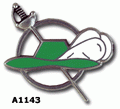|
|
Ukupno su 915 korisnika na forumu :: 62 registrovanih, 7 sakrivenih i 846 gosta :: [ Administrator ] [ Supermoderator ] [ Moderator ] :: Detaljnije Najviše korisnika na forumu ikad bilo je 3195 - dana 09 Nov 2023 14:47 - Korisnici koji su trenutno na forumu:
- Korisnici trenutno na forumu: Alojzije, alternator, Asteker, Avalon015, avijacija, Ben Roj, bobomicek, Boris BM, Bosnjo, Cigi, cojapop, Dado78, DavidA, Dioniss, Djokislav, draganl, Electron, Gitzherai, GrobarPovratak, HPkopun, hyla, kreker, Laika8010, Macalone, madun123, mercedesamg, mikrimaus, milenko crazy north, Milometer, mrav pesadinac, mux, nemkea71, nevjerna beba, nikola013, oganj123, Oscar, pablojepao, Paklenica, pein, pisac12, Plavi Jadran, Povratak1912, Prečanin30, Rebel Frank, repac, royst33, sasovsky, sickmouse, stefan95, stegonosa, Stoilkovic, The Boss, Trivo, ujke, vazduh, vidra boy, voja64, x011, YugoSlav, Zeljo980, Zorge, šumar bk2
|
















